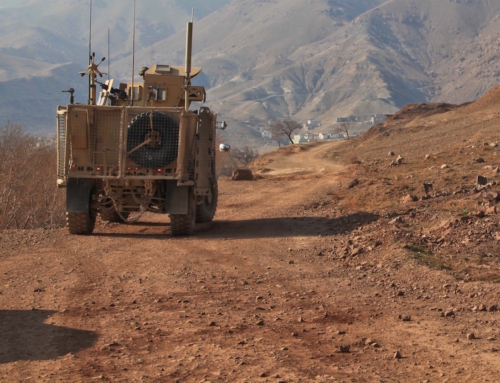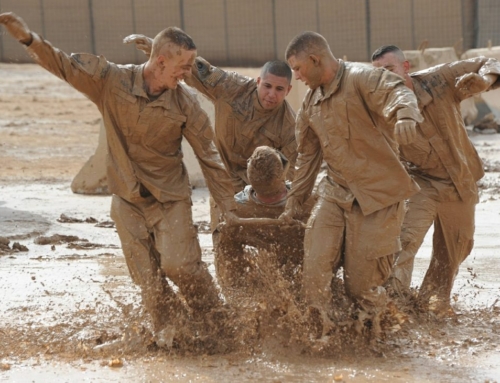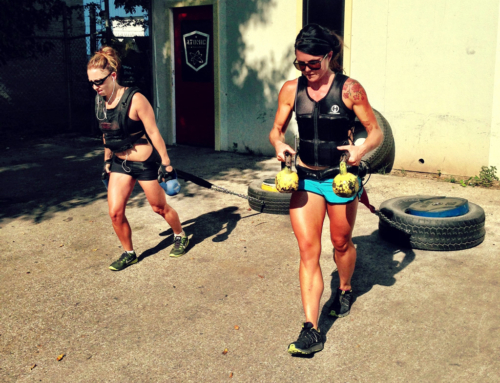Strength + Speed = Power 
Developing an effective training program requires a thorough knowledge of “Training Effect”. Training Effect simply refers to the cardiovascular, muskulo-skeletal, and central nervous system changes that occur in an athlete’s body due to their workout regimen. A good training program should have enough variety in application that it causes a broad range of improvements in overall performance of Strength, Stamina, Power, Speed, and Endurance.
This week we’ll begin the second part of a 4-part series on developing Power through Plyometrics.
Muscular power and muscular strength are two different things. Plyometric exercises, also called “plyos” target fast twitch muscle fibers with the intent to improve muscular power. Muscular strength refers to how much force can be applied, but alone is not indicative of speed. Plyometric exercises train the muscles to reach maximal strength in the shortest time possible. In other words, strength plus speed equals power.
Plyometric exercises utilize a short muscle lengthening phase (eccentric contraction) and an explosive take off (concentric contraction). The “amortization phase” that makes plyometrics effective, begins at the start of the lengthening phase and ends at the beginning of take-off. There should be no pause during the amortization phase.
In the example of jumping, the starting position is standing up straight; the eccentric contraction is bending at the knees and hip, lengthening the muscles of the hamstrings and glutes. The concentric phase begins as soon as the knees and hip are bent enough to allow an explosive contraction of the hamstrings and glutes. Immediate contraction at the bottom of the dip allows for optimal contraction, while pausing at the bottom of the dip drastically reduces muscle power.
Below is an introductory plyo training regimen. Warm Up and stretch prior to training – 10 rounds of 5 pull ups/10 push ups/15 squats.
Follow the basic rules of plyometric exercises this week to develop more power:
- Do not pause at the bottom of the movement.
- Contract muscle explosively.
- Recover between sets. Don’t rush.
Note: Plyometric exercises are intended to be used by athletes who are fit and actively involved in a training program. It is recommended that you consult a medical professional before starting a training program.
Part 1
Squat Jumps: 3×10
Stand with feet shoulder-width apart, trunk flexed forward slightly with back straight in a neutral position.
Arms should be in the ready” position with elbows flexed at approximately 90.
Lower body where thighs are parallel to ground and immediately explode upwards vertically and drive arms up. Do not hold a squat position before jumping up keep the time between dipping down and jumping up to a minimum.
Land on both feet. Rest for 1-2 seconds and repeat Prior to takeoff extend the ankles to their maximum range (full plantar flexion) to ensure proper mechanics.
Lateral Jump to Box: 3×10
Stand side on to box with feet slightly wider than hip-width apart.
Lower body into a semi-squat position and jump up onto box. Do not hold a squat position before jumping up keep the time between dipping down and jumping up to a minimum.
Feet should land softly on box. Step back down (not jump back down) and repeat.
Overhead Throws: 3×10
Stand with one foot in front (staggered stance) with knees slightly bent.
Pull medicine ball back behind head and forcefully throw ball forward as far as possible into the wall.
Catch ball on the bounce from the wall and repeat according to prescribed repetitions. Keep the time between pulling the ball back and starting the throw (transition phase)
to a minimum. Can also be completed with a partner instead of a wall.
Plyometric Push-Ups: 3×10
Start by getting into a push-up position.
Lower yourself to the ground and then explosively push up so that your hands leave the ground.
Catch your fall with your hands and immediately lower yourself into a push-up again and repeat.
Part 2
Split Squat Jumps: 3×10
Stand with feet hip width apart. Take left leg and step back approximately 2 feet standing on the ball of back foot.
Feet should be positioned at a staggered stance with head and back erect and straight in a neutral position.
Lower body by bending at right hip and knee until thigh is parallel to floor then immediately explode vertically.
Switch feet in the air so that the back foot lands forward and vice versa.
Prior to takeoff extend the ankles to their maximum range (full plantar flexion)
Bounding: 30yardsx10
Jog into the start of the drill for forward momentum.
After a few feet, forcefully push off with the left foot and bring the leg forward. At same time drive your right arm forward.
Repeat with other leg and arm
This exercise is an exaggerated running motion focusing on foot push-off and air time.
Side Throws: 3×10
Stand with feet hip-width apart; place left foot approximately one foot in front of right foot.
Hold medicine ball with both hands and arms only slightly bent.
Swing ball over to the right hip and forcefully underhand toss ball forward to a partner or wall. Keep the stomach drawn in to maximize proper usage of muscle.
Over Back Toss: 3×10
Stand with feet slightly wider than hip-width apart. Have a partner or trainer stand approximately 10-15 yards behind you.
Grasp ball and lower body into a semi-squat position. Explode up extending the entire body and throwing medicine ball up and over the body.
The goal is to throw the ball behind you as far as you and generating most of the power in the legs.
Part 3
Squat Jumps: 3×10
Stand with feet shoulder-width apart, trunk flexed forward slightly with back straight in a neutral position.
Arms should be in the ready” position with elbows flexed at approximately 90.
Lower body where thighs are parallel to ground and immediately explode upwards vertically and drive arms up. Do not hold a squat position before jumping up keep the time between dipping down and jumping up to a minimum.
Land on both feet. Rest for 1-2 seconds and repeat Prior to takeoff extend the ankles to their maximum range (full plantar flexion) to ensure proper mechanics.
Lateral Hurdle Jumps: 5x30sec
Stand beside object to be cleared.
Bring knees up and jump vertically but also laterally off ground and over the barrier.
Land on both feet and immediately jump the other direction over barrier.
Try not to pause between jumps or sink
Plyometric Push-Ups: 3×10
Start by getting into a push-up position.
Lower yourself to the ground and then explosively push up so that your hands leave the ground.
Catch your fall with your hands and immediately lower yourself into a push-up again and repeat.
Single Arm Overhead Throws: 2×10 each arm
Stand with feet slightly wider than hip-width apart.
Grasp medicine and lower body into a semi-squat position. Explode up extending the entire body and throwing the medicine ball up into the air.
The aim is to throw the ball as high as you can and generating most of the power in the legs.
Catch ball on the bounce and repeat.
Part 4
Tuck Jumps: 3×10
1. Stand with feet shoulder-width apart, knees slightly bent, with arms at sides.
2. Jump up bringing knees up to chest.
3. Land on balls of feet and repeat immediately.
4. Remember to reduce ground contact time by landing soft on feet and springing into air.
Depth Jumps: 3×10
1. Stand on box with toes close to edge, feet shoulder width apart.
2. Step off (do not jump off) box and land on both feet. Immediately jump up as high as possible
and reach up with both hands towards. The jump should be vertical with no horizontal
movement. 4. Ground contact time should be short unlike in the diagram. Landing should be
soft.Note: Start with a box height of 12in. Intensity can be increased by gradually increasing the
box height to a maximum of 42in but this is only for experienced athletes with a substantial
strength training background.
Over Back Toss: 3×10
1. Stand with feet slightly wider than hip-width apart. Have a partner or trainer stand approximately
10-15 yards behind you.
2. Grasp ball and lower body into a semi-squat position. Explode up extending the entire body and
throwing medicine ball up and over the body.
3. The goal is to throw the ball behind you as far as you and generating most of the power in the
legs.










